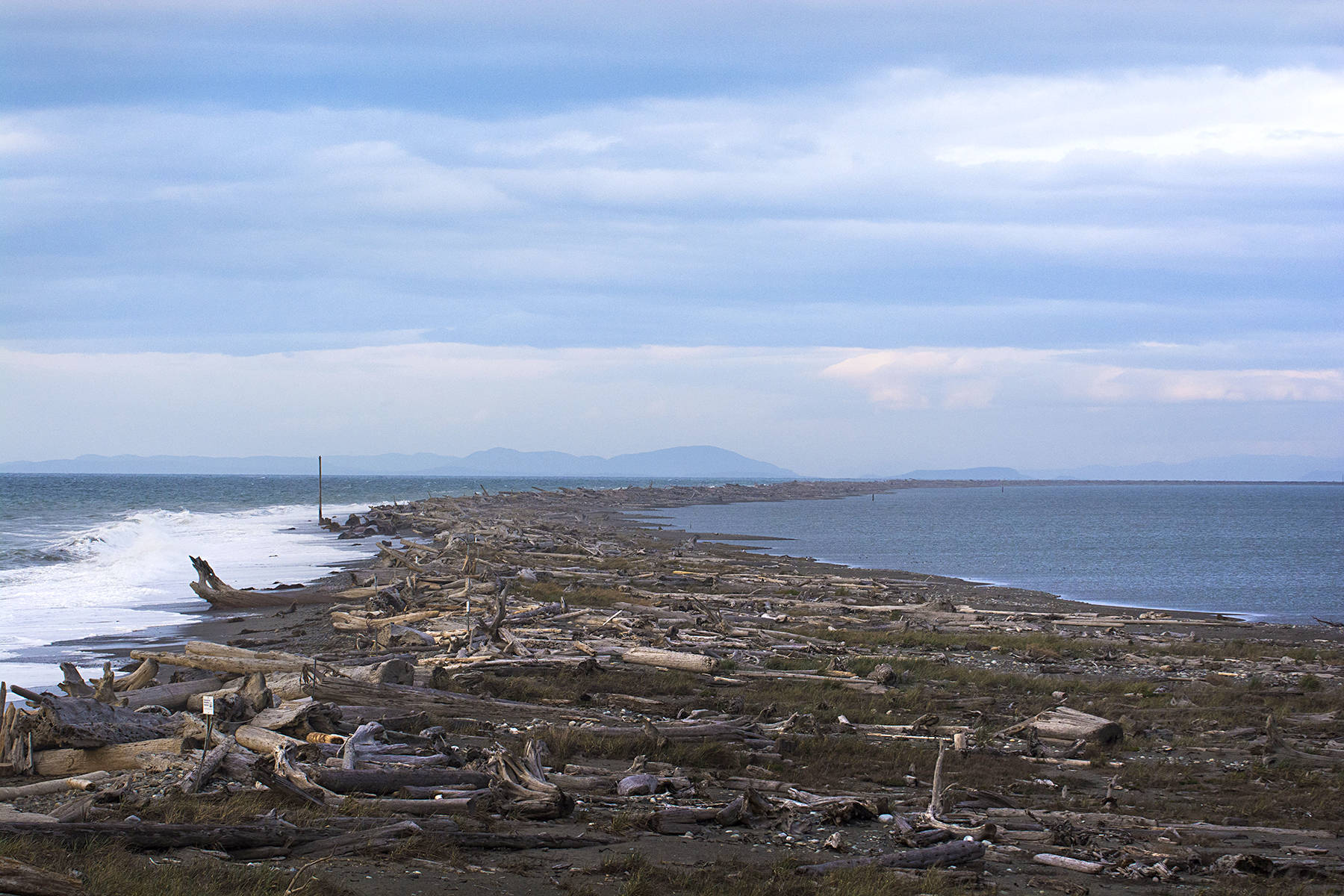SEQUIM — The Jamestown S’Klallam Tribe seeks to re-establish an oyster farm in Dungeness Bay and will have its proposal heard by the Clallam County Hearing Examiner on Thursday.
The tribe’s oyster farm would be on 50 acres of leased Department of Natural Resources tideland within the Dungeness National Wildlife Refuge, said Ron Allen, tribal chairman. The farm would be in the bay about 4,000 feet north of Cline Spit.
“If everything goes well, we’ll be planting next spring,” he said.
The hearing is set for 1 p.m. Thursday in Room 160 at the Clallam County Courthouse, 223 E. Fourth Street, Port Angeles.
The area has been used for oyster farming since before 1953 through a succession of private owners.
The tribe purchased the farm in 1990 and operated it for a few years before it was decertified due to contamination in the bay, Allen said.
The state Department of Health warned about deteriorating water quality in 1995 and closed portions of the bay in 1997, 1999 and 2003, mostly because of fecal coliform. The oyster operation was then closed in 2005, according to county records.
In 2015, the Department of Health upgraded 688 acres — which included the proposed site — from “conditionally approved to “approved.”
“It’s taken us 10 to 12 years in working with the county, the Department of Ecology and other parties who helped us correct the problem,” Allen said.
The farm itself would be on 34 acres of the leased land, leaving 25 foot buffers for conservation of eelgrass, according to county documents.
Allen said U.S. Fish and Wildlife raised issues about the eelgrass in the area, causing the farmable area to be reduced from 50 acres to 34 acres. Allen said the tribe has no issues with leaving room for eelgrass, though he said it hasn’t been a concern in the past.
The tribe, Clallam County Marine Resource Committee, state Department of Fish and Wildlife and U.S. Fish and Wildlife Services had surveyed the area for eelgrass in July and marked areas with three or more shoots of eelgrass.
“We have high regard for the importance of eelgrass,” he said, adding the tribe has agreed to monitor the eelgrass. “Nobody is more respectful of nature than we are.”
Allen said he has heard concerns about impacts the farm could have on birds in the refuge, but said those concerns are unfounded.
“We have all kinds of documentation to show the bird life can coexist in regard to oyster farms,” he said. “The food that the bird life depends on is not harmed or impeded.”
The tribe’s application says it would be changing how it harvests oysters. The tribe is proposing to use the “on-bottom bag” cultivation method, which has commonly been used by shellfish growers in Washington.
According to the tribe it’s difficult to see the dark-colored mesh bags, which blend into the substrate. The bags are only visible from within 100 yards during negative low tides, according to the tribe.
There would be about 6,000 bags per acre with a maximum number of bags ranging from 75,000 to 150,000 over the 34 acres of farming area.
It would take the tribe several years before it was farming the entire 34 acres due to costs associated with farming, Allen said.
“We’ll start with a few and we’ll see how that goes,” he said, adding the tribe would likely start building capacity within a few years.
Allen said he has heard concerns about how much activity there would be in the area, but he said the proposal would provide much-needed jobs.
The tribe’s application says it would access the site using a small boat and that up to 15 people would be working on-site during low tides between 50 and 90 days per year.
“It’s going to create jobs because we’re harvesting manually,” Allen said.
Allen said he has heard concerns about noise and people working, but the tribe would make no more noise than anyone else in the area who is fishing or crabbing, he said.
“Our operation is very marginal and we’re not using mechanical harvesters,” he said. “There is a perception by some that it’s going to be noisy, racketing and annoying activity, but that’s not true.”
The project is opposed by Darlene Schanfald of the Olympic Environmental Council, who said she also is speaking for Protect the Peninsula’s Future and Friends of Miller Peninsula State Park.
She fears the farm would pollute a federally protected area because of the density of an oyster farm.
Allen said that naturally occurring oyster colonies can be much denser than the farmed area would be.
When farming oysters, “you spread them out,” he said. “You don’t spread them densely.”
Schanfald also said that the plastic mats used to grow oysters smothers wildlife underneath and that the mats break down into plastic pieces.
“That’s simply not true,” Allen said.
“Life grows underneath the mats. And we flip the mats, so they don’t just stay there forever.
He also said that the mats don’t break down. “Once they have exhausted their usefulness we remove them.”
Schanfald said she plans to attend the hearing and will request that “the project not be approved and if there is any consideration to look at it further, then there should be an EIS [environmental impact statement].
“We have a treaty interest in protecting the environment,” Allen said. “There’s no way that our farmers or our natural resource department are going to do anything to degrade the environment.”
The county will accept comments on the proposal through Thursday. To comment, email dcdplan@co.clallam.wa.us.
________
Reporter Jesse Major can be reached at 360-452-2345, ext. 56250, or at jmajor@peninsuladailynews.com.

